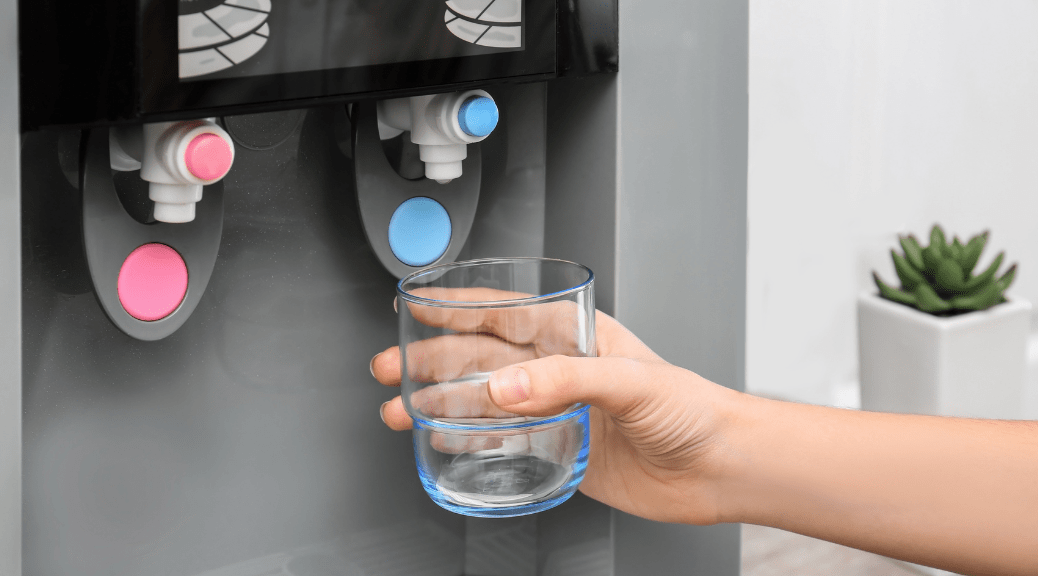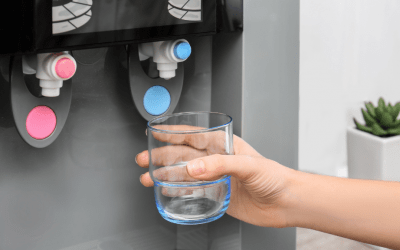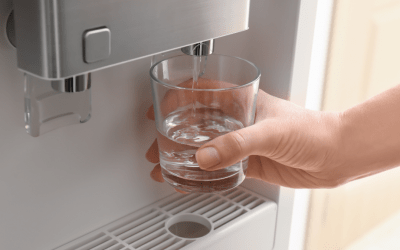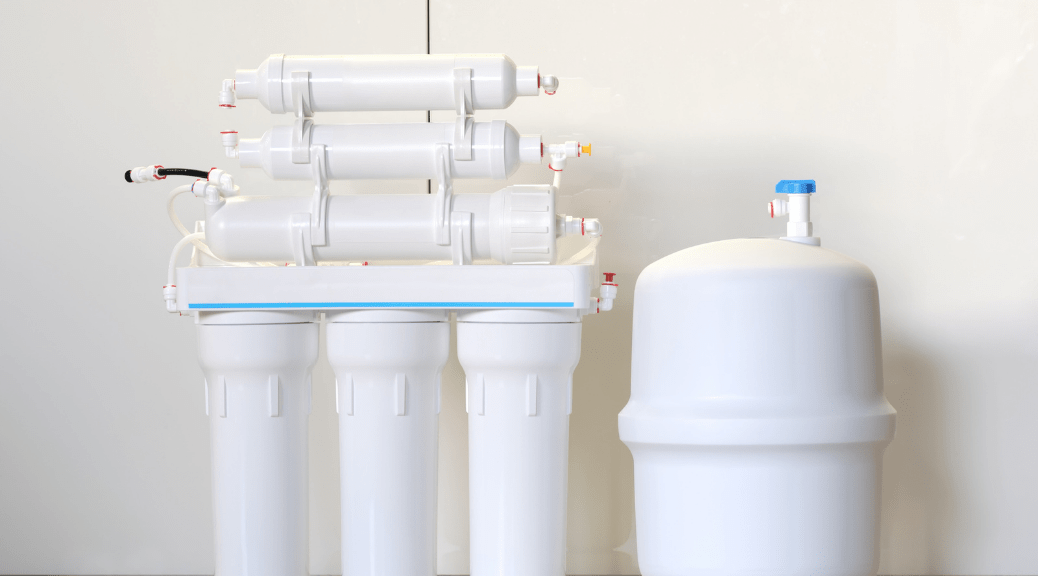Water Purifiers: An Everyday Necessity Bacteria and viruses are not visible to the naked eye but they are the major causes for water borne diseases....

Water Purifiers: An Everyday Necessity
Water Purifiers: An Everyday Necessity
Water Purifiers: An Everyday Necessity
Bacteria and viruses are not visible to the naked eye but they are the major causes for water borne diseases. Bacteria cause gastro-enteritis, typhoid, cholera, paratyphoid, dysentery and diarrhoea. Virus causes polio, dysentery, gastro-enteritis, and diarrhoea. The type of impurities found in the drinking water coming to your home is mainly due to the source and distribution medium of water. Most common sources of drinking water are piped municipal corporation supply, hand operated water pumps, water tankers, lakes, rivers, bore wells, etc.
Why is Water Purifier Required?
Quality of water is getting deteriorated and contaminated day by day. There are many harmful contaminants that are present in water. These impurities are having an adverse effect on human health. These include dissolved solids, arsenic, fluoride, antibiotics, micro plastics, rust, pesticides, disease-causing germs and bacteria and heavy metals such as arsenic, lead, iron, fluoride etc. These contaminants are responsible for causing serious health issues like cholera, hepatitis, jaundice, typhoid, and even cancer. These impurities affect the taste and smell of the water as well. Hence, it is important to remove these contaminants from the water, so that your family is provided with water that is free of any smell as well as safe and healthy for consumption.
Which type of water purifier is better for what kind of water?
There are different kinds of water purifiers available in India today. Water purifiers can be from just a simple water filter with filter cartridge element to the more advanced water purifiers using membranes for water filtration followed by sterilisation with UV filter.
- When water is hard and has high contamination, consider RO + UV purifier.
- When water is hard and has low contamination, consider RO purifier.
- When water is soft and has high or low contamination, consider UV purifier.
- If you don’t have installation feasibility for RO, UV water purifiers like running water, optimum water pressure, electricity, consider Gravity based filters
- Gravity based filter is the right purifier for municipality or corporation water, which is already chemically purified, and since this water comes from running water.
How to find out which type of water purifier you require?
Water contains many dissolved salts, impurities which should be removed before drinking. TDS levels measure the amount of dissolved salts and heavy metals like lead, arsenic, mercury present in water. The first thing to do is to get your home water tested for the type of pollution it may have. Accordingly you may decide which type of water purifier you need.
By measuring TDS Level in water, you will be able to make sure whether the water you are drinking is pure or impure. The maximum TDS level in water is 500mg/litre. You must make sure that it meets this mentioned level. If you see that the level is exceeding 1000mg/litre, we suggest that you do not drink that water.
How to check the TDS Level in Water at Home?
The easiest method is digital TDS meter tester to check the TDS of water. You can easily buy a Digital TDS Meter for about Rs.150-200.
Water Purification Technologies & Uses
Reverse Osmosis (RO) Purifiers
Reverse Osmosis (RO) pushes the water molecules from the region of higher TDS level to the region of lower TDS level by applying external pressure with the help of a water pump to reverse the natural flow of water. Water with impurities or high TDS is pumped at high pressure into the RO chamber, this pushes the water molecules across the semi-permeable membrane to the other side while leaving the dissolved solids and other impurities behind. All the dissolved solids and impurities along with some input water, also known as RO waste water, are discharged through a separate outlet. RO purifiers are therefore always recommended for purifying water which has high TDS level.
Ultraviolet (UV) Purification
Ultraviolet or UV purification uses ultraviolet rays for the purification of water. A UV purifier works by throwing high intensity UV rays on the water which kills or inactivates the disease causing bacteria and viruses. However, UV purifiers cannot remove any dissolved or un-dissolved impurities or chemicals from water. Hence, most of the UV purifiers that are available in the market use some form of external sediment pre-filters to remove un-dissolved impurities and activated carbon filter to remove chlorine and some dissolved impurities. Therefore, UV water purifiers are only recommended for areas where the water source has low level of TDS. If the water has low TDS level but it is contaminated with bacteria and viruses and appears muddy, then you can use UF+UV water purifier.
Gravity based Water Purifiers
Water is allowed to flow from a top container to a lower container under the effect of gravity. Gravity-based water purifiers do not use electricity and therefore called non-electrical water purifiers. They typically use activated carbon or UF, which is made up of small carbon granules in order to absorb impurities from the water.
Ultrafiltration (UF)
Ultrafiltration also uses a semi-permeable membrane with much larger pores (appx. 0.01 microns) as compared to RO with very small pores (appx. 0.0001 microns).The advantage of UF purifiers is it can work without electricity because the membrane has much larger pores and water can pass through it naturally using the force of gravity. Which means no external pressure or water pump is required. Since UF purifiers do not hold back any water, there is no wastage of water. But there are some limitations of using UF purifiers, because of the larger pore size, UF can only remove un-dissolved solids and larger impurities. It cannot remove the dissolved solids or reduce the TDS level. So, UF purifiers are not suitable for purification of high TDS water or hard water.
Activated Carbon Filter
These types of filters or purifiers are the simplest to use and provide the most basic water purification. These filters generally comprise of sediment or sediment + activated carbon filters which can remove large and un-dissolved impurities like mud and sand along with some chemicals and microorganisms.
Candle Filters
Ceramic candle filters have 2 stainless steel containers where the upper container is fitted with 1-3 ceramic candles. In the candles, silver powder is impregnated which acts as a strong repellent of the pathogenic bacteria. It is considered the safest conventional water filter as per Consumer VOICE repeated studies.
Comparison of Water Purification Technology at a Glance
| RO Water Purifier | UV Water Purifier | UF Water Purifier | Gravity Based water Purifier |
| Requires electricity to operate | Requires electricity to operate | No electricity required | No electricity required |
| Kills and removes all the bacteria and viruses from the water | Kills all bacteria and viruses but their dead bodies remain in the water | Removes larger particles, and may remove some viruses | Mud, sand and some bacteria, and microbial cysts are removed |
| Removes the dissolved salts | Cannot remove dissolved salts | Cannot remove dissolved salts | Cannot remove dissolved salts |
| RO Purifiers has Prefiltration system to work with the dirty water | Water should be clear for UV to work | Works with dirty turbid water | Filter can work with dirty turbid water |
Disadvantages of RO Water
RO water purifier removes essential natural minerals like sodium, iron, calcium, and magnesium that are essential for our body and causes a lack of essential minerals within the body. It is a major disadvantage of RO water purifiers. Other disadvantage is high wastage of water (up to 80%). This waste water can be used for utensil washing, flushing, gardening, cleaning of vehicles and floor mopping.
What is TDS (Total dissolved solids)?
TDS stands for total dissolved solids. Minerals, salts or dissolved metals such as calcium, chloride, nitrate, iron, sulphur and some organic matter that dissolves in water is commonly referred to as TDS. Presence of TDS in water will affect the water taste. Water of TDS value above 500 mg/l should be avoided for human consumption. Most commonly used purification system to reduce TDS is reverse osmosis (RO) water purifier.
What should be the safe TDS level in drinking water?
The upper limit of TDS level in drinking water set by Bureau of Indian Standards (BIS) is 500 ppm (500 milligrams per litre). Very low TDS may also not acceptable to consumers due to its insipid taste.
Water with TDS value ranging between 150-300 ppm is considered to be soft water, while water with TDS value higher than 500 ppm is considered to be hard water.
- Less than 300 mg/litre- Excellent
- 300-500 – Good
- 500-900- Average
- 900-1200- Poor
- Above 1200 – Unacceptable
TDS and its Effect
High TDS affects the taste of water (salty) and excessive scaling in water pipes, water heaters, and household appliances such as kettles and steam irons. Such scaling can shorten the service life of these appliances. Water with extremely low concentrations of TDS may also be unacceptable to consumers because of its flat, insipid taste; it is also often corrosive to water-supply systems.
Where RO systems should be recommended/used?
The TDS levels and the contaminants can differ from place to place and house to house. It is very important to test the quality of water that is being supplied to your home to know the type of water purifier that is most suitable in removing these contaminants. RO water purifiers are the best choices for areas with high TDS levels while UV water purifiers are useful in killing the germs and bacteria that cause various water-borne diseases.
- Soft water has low TDS level; UF water purifiers work pretty well for it.
- For soft water with high level of biological contamination, go for a UV or UF+UV water purifier.
- Hard water contains higher level of TDS, apart from specific toxins; so, RO based purifiers are well suited for purifying it.
- For hard water with high level of biological contamination, go for a RO+UV or RO+UV+UF water purifier.
- UF filters are best used in combination with another water purification system, as they don’t kill any microorganisms in contaminated water. UF filters only remove suspended solids from water.
- Activated carbon based water purifiers are ideally suited to remove excess chlorine from water.
RO water wastages and how to utilize it
The high percentage of water wastage is a major cause for worry. This waste water can be used for utensil washing, flushing, gardening, vehicle cleaning and floor mopping.
If the output water from your purifier has very low TDS (less than 100) then it means your purifier is generating more waste water. A very low level of TDS not only results in higher wastage of water but it is also bad for our health as it is devoid of essential minerals. Increasing the TDS will not only make the drinking water healthier but also reduce the wastage. TDS controller retains adequate quantities of essential minerals in the purified water by adjusting the ratio of water from RO membrane (low TDS) and UF membrane (normal TDS) in the final mix.
Which Type of Water Purifier is best for you?
If you do not want to go into the technicalities of the different purification approaches, then you can simply refer to the following tips in choosing the right water purifier as per your need:
- RO systems are useful where the TDS levels are above 500 mg/litre and hardness is on the higher side. If the municipal water supply is quite satisfactory and has permissible TDS levels below 500, RO purifiers are not required. UV purifiers should be used instead.
- You may get your water tested. It will also help you make a decision based on facts and figures. If the water has a very high amount of magnesium, fluoride nitrates or calcium salts, RO purifier will be the best for you.
- If the water supplied at your location is highly contaminated (with microbes, bacteria and virus) and is dirty as well, RO/UF + UV purifiers are the best solution. The UV rays destroy the microbes and the RO/UF filters out their dead bodies and other contaminants.
Tips for Purchasing a Water Purifier
Please decide on type of water purifier suitable for you as per the quality of water supplied in your home. Make sure you read the customer reviews and ratings about the RO, UV water purifier before purchasing. This will give you a complete idea about the product and it’s after sales service because the customer has already used that product.
Before selecting the best water purifier for your home, it is very important to check the maintenance cost. Water purifiers need regular maintenance after 3-4 months so that it functions smoothly. As a result, it is necessary to check the quality of after-sales services provided by the brand that you have selected. You may like to go for a trusted water purifier brand which offers excellent customer support. Generally, all the reputed brands provide free installation and one year warranty.
Water Purifier Brands Available in Markets
|
Brand |
Model |
Storage capacity, litre |
Technology |
Water Tank material |
Rate of filtration, litre per hour |
Price, Rs. |
Warranty, Years |
|
Aquaguard |
Aura |
7 |
UV + UF |
Plastic |
|
11499 |
1 |
|
Havells |
Fab UV Storage |
7 |
UV+UF |
plastic |
30 |
7999 |
1 |
|
KENT |
Max |
7 |
UV+UF |
Plastic |
60 |
8790 |
1 |
|
Kent |
Ultra Storage |
8 |
UV+UF |
|
60 |
7999 |
1 |
|
|
|
|
|
|
|
|
|
|
Aquaguard |
Marvel NXT |
6.2 |
RO+UV+UF+MC |
Plastic |
45 |
12699 |
1 |
|
Pureit |
Copper+Mineral RO+UV+MF |
8 |
RO + UV + MF |
Plastic |
Upto 28 |
22490 |
1 |
|
V-Guard |
Zenora |
7 |
RO+UV+MB |
Plastic |
15 |
10119 |
1 |
|
Faber |
FWP Neutron Plus Alkaline |
10 |
RO |
ABS |
13.5 |
13999 |
1 |
|
Livpure |
GLO PRO++ |
7 |
RO+UV+UF |
Plastic |
12 |
10490 |
|
|
Aquaguard |
Amaze |
7 |
RO+UV+MTDS |
Plastic |
36 |
9499 |
1 |
|
Aquaguard |
Delight RO+UV+UF+MTDS |
7 |
RO+UV+UF+MTDS |
Plastic |
36 |
11299 |
1 |
|
Livpure
|
Zinger Hot HR DX Ecocare |
6.5 |
RO+Pure UV+UF+ Mineraliser+Copper |
ABS |
15 |
21990 |
1 |
|
Pureit |
RO+UV |
8.0 |
RO+UV |
Plastic |
|
22490 |
1 |
|
Kent |
Supreme Plus
|
8.0 |
RO+UV+UF+TDS Control |
Plastic |
|
15499 |
1 |
|
Pureit |
Ultima Mineral
|
10 |
RO + UV + MF
|
Plstic |
|
18490 |
1 |
|
Havells |
Delight DX |
6.5 |
RO+UV |
Plastic SS tank |
|
13999 |
1 |
|
Havells |
Digitouch Alkaline |
6 |
RO+UV |
Plastic |
|
14890 |
1 |
|
AO Smith |
Z8 |
10 |
RO+SCMT |
Plastic |
|
24199 |
1 |
|
Non-Electric Purifiers |
|
|
|
|
|
||
|
Kent |
Gold |
20 |
Gravity Based + UF |
Plastic |
20 |
2,898 |
1 |
|
Tata |
Swach |
18 |
Gravity |
Plastic |
14 |
2499 |
1/2 |
|
Kent |
Gold Plus |
20 |
Gravity-based+UF |
Plastic |
20 |
2998 |
1 |
|
Kent |
Gold Optima |
10 |
Gravity-based |
Plastic |
18 |
1798 |
1/2 |
|
Tata |
Desire + |
27 |
Gravity Based |
Plastic |
|
3299 |
1/2 |
|
Prestige |
TTK Tattva |
16 |
Gravity Based |
SS |
|
2899 |
1 |
Note: Prices may vary. For latest price, check on amazon.in or flipkart.com.
Related
Water Purifiers: An Everyday Necessity
How to choose the best water purifier
How and What to ChooseSome of us boil water before drinking it; some of us are resigned to buying packaged water regularly; and some of us invest in...
Buying Guide: Types of Water Purifiers – RO, UV, UF and Candle Filter
Some of us boil water before drinking it; some of us are resigned to buying packaged water regularly; and some of us invest in water filters and...





